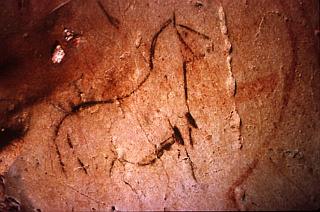|
Home Horse Breeds | First Posted: Aug 6, 2009 May 13, 2020 | |
Iberian Horses/Spanish Sulphur Horse/Many Are Gaited"The American Sulphur Horse Association was formed in 2003 in efforts to preserve, promote and protect this beautiful Spanish Iberian horse. Read the history of the rare Spanish American Sulphur and what ASHA is doing with it's efforts to help preserve this unique breed of Spanish horse. Read our frequently asked questions page. ASHA supports the purposeful breeding of the "Spanish-type." Our goal is not for the marketability of our Sulphur's, it is for the preservation of the Spanish Sulphur gene pool."
One can go back to the Neolithic Age and see ancient drawings of the Iberian Pony in both Northern and Southern Iberia. This type of horse has been found in prehistoric cave drawings at places like La Pasiega and Altamira in the north of the Iberian peninsula. However, the drawings are distinctly different, depending on the region. In the North the drawings are of the pony type and in the south they are more horse-like. Iberian Horses These horses may also be referred to as the Spanish Sulphur horse which derives from a very ancient breed present in the Portuguese territory from prehistory, as seen in the paintings of the Paleolithic era. These horses were then crossed with the small horses of the Celts, evolving into the horse of Celtic type as we know it today.
Cave Painting at La Pasiega
 Earlier representations of the primitive Iberian horse can be seen in paintings done in caves at La Pileta (Malaga, Spain) which are dated from 20.000 B.C. and at Escoural (Alentejo, Portugal) which are dated between 17.000 B.C. and 13.000 B.C. The Northern Ponies The Northern Iberian ponies lived in the mountainous regions in the Northern part of the peninsula. These animals lived in a cooler, wetter climate. Breeds such as the Asturcon, Pottok, Losino, Garrano, Navarra, and Mérens were among these breeds. These animals make a family of mountain horses and their origins date all the way back to prehistoric times. It should also be noted that these horses tended to be gaited. Many of the breeds today have origins to these Iberian Peninsula horses. It is interesting to understand that historically the Celts around 600 B.C. brought ponies of the Caspian type. The Caspian type ponies had lateral gaits such as the running walk, amble and single foot or rack. Thus, today, gaited ponies in Great Britain most likely descended from this lineage along with the Galloway Pony (now extinct), the Narragansett Pacer (now extinct), the Garrano, Paso Fino, Peruvian Paso Fino, the American Saddlebred, the American Standardbred, the Tennessee Walking Horse, Racking Horses, and many more gaited horses and ponies. The primitive Iberian horse could be found in the planes from the southern regions of the Iberian peninsula. It began to be ridden at the end of the Neolithic age. Unlike the Iberian Pony, this type of horse has been widely influenced by man throughout the history of the Iberian Peninsula. Physical Description From the cave paintings one can see that these ponies had large heads, small ears, short mussels, short, thick necks, wide barrel bodies, and short limbs. Influences Many of the gaited horses of today. Uses Agriculture and transport in the mountainous regions. Note: "...In the Iron age the Phoenicians, Greeks, Carthaginians and Romans came to the Iberian peninsula. The first two did not bring enough horses in a way that could substantially influence the existing Iberian horse. However, Greeks have a legend where the horses from "Lusitânia," on the banks of river Tagus, have as father the wind. This is certainly a metaphoric and poetic way to express how fast the Iberian horse was considered in the antiquity (Monteiro, 1985). The Carthaginians and Romans brought, in particular, the Berber horse. This can be seen through the several statues and coins from these civilizations, which show a horse with convex head profile and high and round movements (Oom, 1992). After the Romans the tribes from central and northern Europe: the Vandals, Alans and Suevi have partitioned the Iberian Peninsula among themselves. The first two brought horses ancestors of the German heavy horse breeds (coldblood or draught horse breeds). The Suevi who had taken control over the larger part of the Iberian peninsula brought horses of the similar type to the Celts (Monteiro, 1985), they will be later defeated by the Visigoths which again brought horses ancestors of the German heavy horse breeds. The Arabs have followed the Visigoths in the peninsula and brought with them Berber and Arabian horses which have again interbred with the local Iberian horse." For More Information:
International Encyclopedia of Horse Breeds - By Bonnie Lou Hendricks |